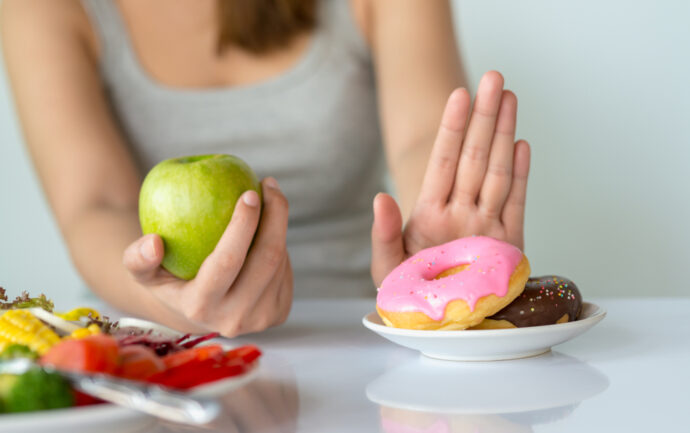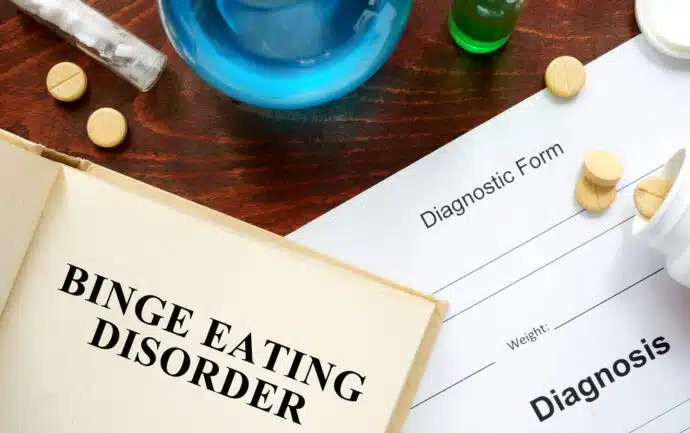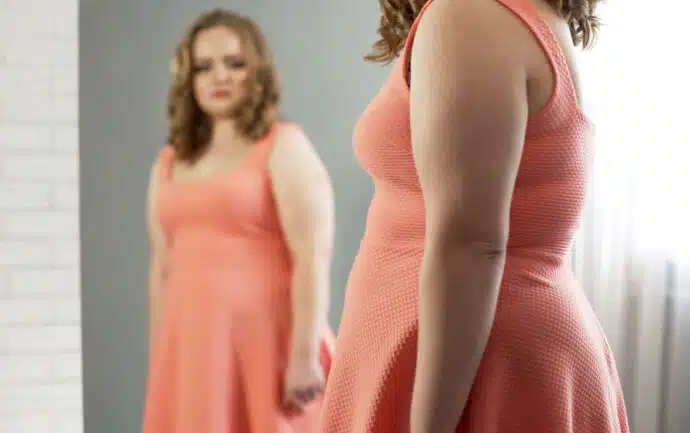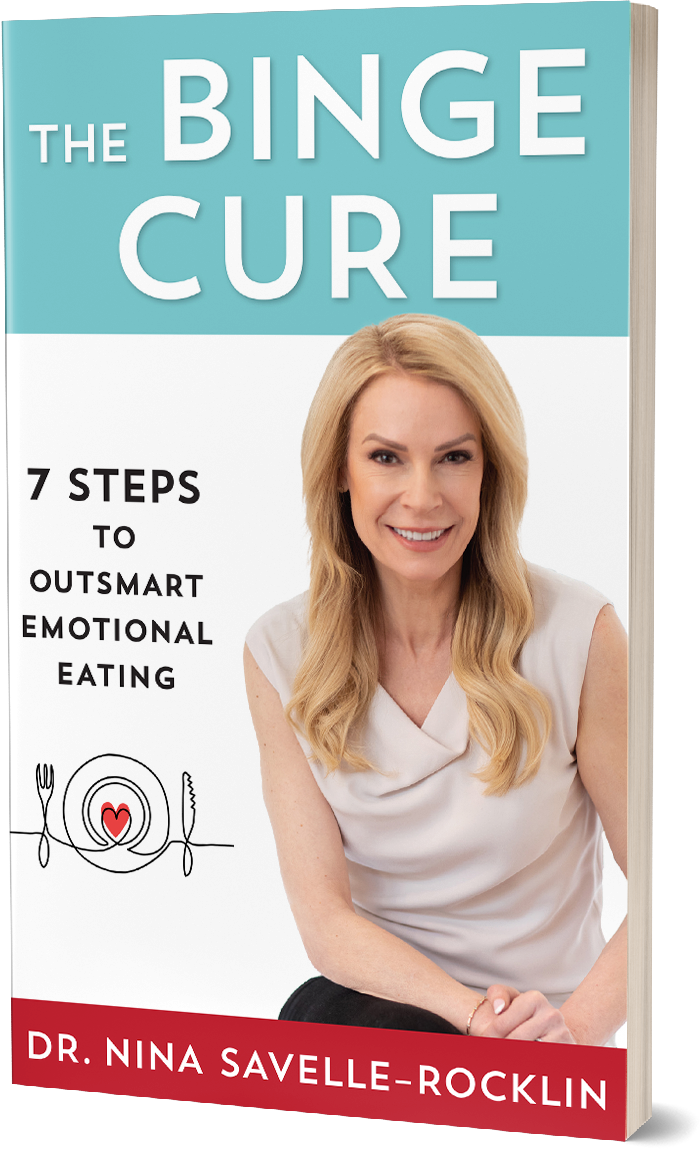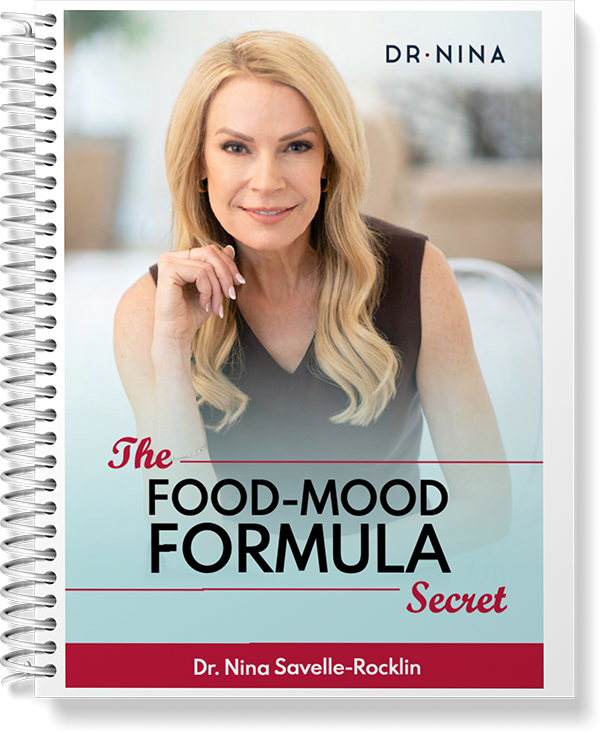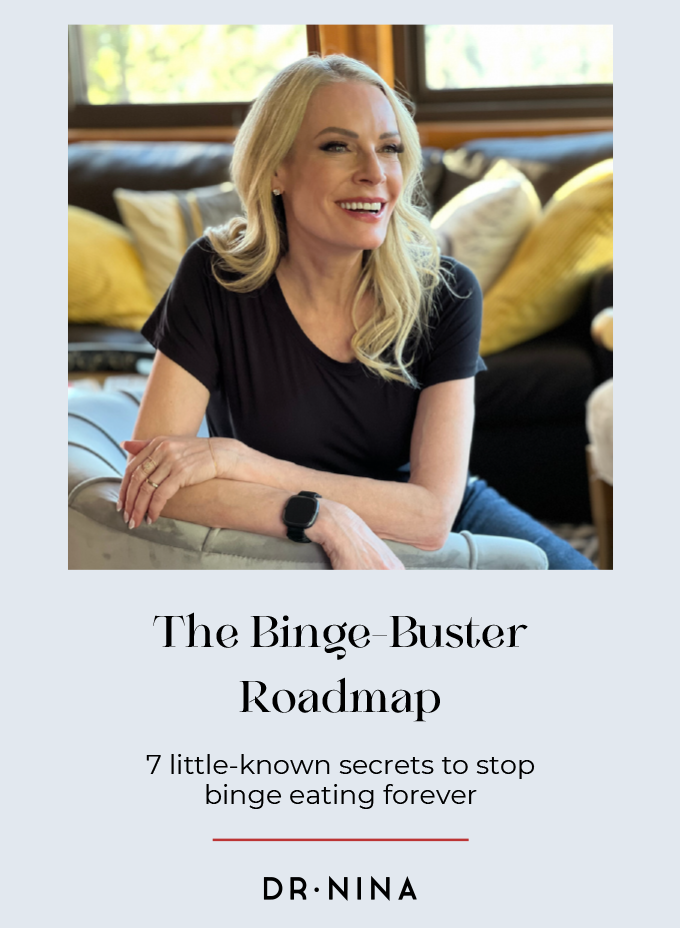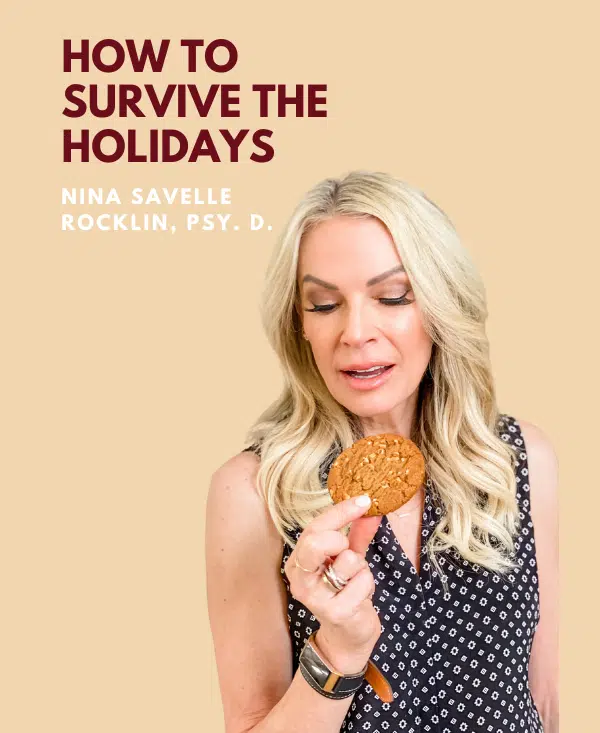Dr. Nina Savelle-Rocklin:
10 Body Acceptance Techniques to Feel Significantly Better About Your Body
Many people struggle with body image, believing they need to have a “better” body before they feel good about themselves. It is possible to feel better about your body while you’re in the process of improving your health or losing weight.
The Buddha says, “Cherish your body. It is yours this one time only.” Many people yearn to have a different body while ignoring the one they have. Our culture has no shortage of people waging war against their bodies.
Social media is filled with photos of women who are doing fad diets, starving themselves, or going to other extreme measures, desperate to change their weight and appearance.
All too often, we hold ourselves up to an ideal of physical perfection and find fault with ourselves when we inevitably fail to meet their goals. This is true of men as well as women. You may have heard the saying, “It is just as hard to be Ken as it is to be Barbie.”
To create a more peaceful and realistic way of relating to ourselves, we must challenge the notion that there is only one good way to have a body, so that we can feel better about the bodies we have.
Here are ten body acceptance techniques that will help you feel better about your body.
Table of Contents
- 1) Practice Body Neutrality
- 2) Practice Mirror Work
- 3) Engage in Intuitive Movement
- 4) Do a Diet Culture Detox
- 5) Create a “body-positive” social media feed
- 6) Give Yourself a Hug
- 7) Create a Body Image Time Capsule
- 8) Do Body Mapping
- 9) Write a Body Apology
- 10) Write a Love Letter to Your Body
- Frequently Asked Questions
1) Practice Body Neutrality
Instead of forcing yourself to love every part of your body, aim for a neutral perspective in which your body’s appearance isn’t the focus of your self-worth.
Body neutrality represents the middle ground between the often unattainable goal of loving every inch of your body and the harmful practice of body hatred.
It’s about acknowledging your body without attaching strong positive or negative emotions to it.
When I work with people who struggle with body image, I find that the concept of body neutrality is useful for those who find the idea of body positivity overwhelming or inauthentic.
Instead of pushing yourself to love parts of your body that you’ve historically struggled with, body neutrality encourages you to simply acknowledge their existence and function.
For example, rather than forcing yourself to say, “I love my stomach,” which might feel completely ridiculous, you can say, “My stomach helps digest the food that nourishes me.”
Do you see how that shifts the focus from appearance to function?
This subtle change in perspective takes the pressure off trying to love your body and instead promotes a kind of peaceful coexistence with it. It’s about respect and appreciation rather than adoration or disdain.
For instance, if you’re taking a bath or a shower, and you can’t stand being naked because it puts you in touch with your body, just notice the sensation of the water, the smell of the soap, the act of cleaning.
This brings you into the present moment and connects you with your body’s capabilities rather than its appearance.
Remember, the goal isn’t to never think negatively about your body. That’s unrealistic in our appearance-focused culture. Instead, it’s about minimizing those negative thoughts and creating space for neutral or appreciative ones.
Body neutrality is a way of relating to your body that doesn’t involve size, shape, or weight. This can be incredibly freeing and can support the process of separating your worth from your appearance.
As with any change, adopting body neutrality takes time and practice. Be patient with yourself. Some days will be easier than others, and that’s okay. The key is consistency and self-compassion.
Start small. Over time, you may find that this practice not only changes how you view your body but also frees up mental energy for other aspects of your life.
After all, your body is where you live and it’s how you experience the world. Treating it with neutral respect is an act of self-care.”
2) Practice Mirror Work
This means standing in front of a mirror and finding some part of your body that you appreciate or like. Now, standing in front of a mirror might feel uncomfortable or even scary.
But stick with me because this exercise can be very helpful. Here’s what I want you to do:
- Look at your Reflection – Stand in front of a mirror, take a deep breath, and really look at yourself.
- Find something you like – I’m not asking you to suddenly love everything you see – that’s not realistic. Instead, I want you to find just one part of your body that you appreciate or like. Maybe it’s your eyes or your smile. It could be your strong legs or smooth skin. Or maybe it’s something as simple as the color of your hair or the shape of your ears.
- Focus on self-appreciation – The key is to focus on appreciation rather than criticism. This is about recognizing the unique aspects of your body that serve you well or that you genuinely like.
- Do you feel something new? – As you do this, pay attention to how you feel. You might notice a shift in your energy or a softening in your self-talk. That’s the power of redirecting your focus from criticism to appreciation.
I know this can feel challenging at first. If you’re used to focusing on perceived flaws, it’s hard to switch perspectives. But with practice, you can train your mind to notice and appreciate the positive aspects of your body.
This isn’t about forcing positivity or pretending you love every inch of yourself. It’s about cultivating a more balanced, compassionate view of your body.
Over time, as you practice this regularly, you may find that your overall body image starts to improve.
And here’s a little secret: the more you practice appreciating your body, the easier it becomes to nourish and care for it in healthy ways. When you’re not at war with your body, you’re more likely to make other choices that support your well-being.
3) Engage in Intuitive Movement
When you think of exercise, do you imagine spending hours at the gym? Instead, try moving your body in ways that feel good and natural to you, without focusing on calorie burning or body shaping.
What is Intuitive movement?
Intuitive movement is a powerful way to reconnect with your body and find joy in physical activity without the baggage of diet culture.
Consider your relationship with exercise. Many people have a history of using exercise as punishment for eating or as a way to ‘earn’ food. This mindset can turn movement into a chore or a source of anxiety rather than a form of self-care.
Intuitive movement flips this script. It’s about tuning into your body’s natural desire to move and honoring that in whatever form feels right for you.
This could be anything from stretching when you wake up, to dancing in your living room, to taking a walk around the block.
Self-Care over Self-Control
The key is to shift your focus away from external motivators like calorie burning and instead tap into internal cues. How does your body feel when you move? What types of movement do you actually like?
Experimenting with different forms of movement can be helpful. Maybe you’ve always been curious about yoga but were intimidated by the idea of a class.
Try a yoga, pilates or stretching video on YouTube and see how that feels. Or maybe you loved swimming as a child but haven’t done it in years. Reconnecting with that activity might bring you a lot of joy.
Intuitive movement isn’t about performance or achievement. There’s no need to push yourself to exhaustion or pain. If you’re not enjoying the movement, it’s okay to stop and try something else.
This approach reframes exercise as a form of self-care rather than self-control. It’s about moving because it feels good, not because you’re trying to compensate for what you’ve eaten or change your body shape.
Making Exercise Fun and Enjoyable
Intuitive movement also allows for flexibility. Some days, your body might crave intense activity, while other days, gentle stretching or even rest might feel best. Honoring these fluctuations is part of the practice.
This helps you experience physical activity as a source of enjoyment and well-being, rather than a tool for weight control. It’s about moving your body because you respect and value it, not because you’re trying to change it.
Give yourself permission to move in ways that feel good to you. Dance, stretch, swim, walk, or simply sway to music. Your body has innate wisdom – trust it, listen to it, and move with it, not against it.
4) Do a Diet Culture Detox
Identify and challenge diet culture messages in your environment, replacing them with more reasonable perspectives.
Diet culture is like air pollution – it’s everywhere, often invisible, and we breathe it in without realizing it. It’s in magazine headlines promising ‘flat abs in 5 days,’ in conversations about ‘good’ and ‘bad’ foods, and in the subtle ways we praise people for losing weight or looking ‘fit.’
Doing a diet culture detox means becoming aware of these messages and actively challenging them. It’s about developing a critical eye and questioning the assumptions you’ve internalized about food and your body.
- Notice the diet culture in your life – Start by noticing diet culture in your daily life. Maybe a coworker is talking about their new cleanse or a social media influencer is promoting a ‘miracle’ weight loss tea. Once you start looking, you’ll be amazed at how pervasive these messages are.
- Challenge the message – The next step is to challenge these messages. Ask yourself: Is this based on scientific fact or diet culture myth? Who profits from me believing this? How does this message make me feel about myself? For example, if you see a headline about ‘foods you should never eat,’ challenge it. All foods can fit into a healthy lifestyle. There are no ‘good’ or ‘bad’ foods – just food. This perspective is much more reasonable and sustainable than rigid food rules.
- Replace it with a compassionate perspective – As you identify these diet culture messages, work on replacing them with more balanced, compassionate perspectives. Instead of ‘I need to lose weight to be happy,’ try ‘My worth is not determined by my weight.’ Instead of ‘I was so bad for eating that cake,’ try ‘I enjoyed that cake as part of a balanced approach to eating.’
- Avoid toxic social media – Also, unfollow social media accounts that make you feel bad about your body. Replace diet books with books about intuitive eating or body acceptance. Surround yourself with people who talk about their bodies and food in neutral or positive ways.
Diet culture is deeply ingrained in our society, and detoxing from it is a process. Be patient with yourself. You might still have days where you fall into old thought patterns, and that’s okay.
The important thing is to keep questioning, keep challenging, and keep moving towards a more balanced perspective.
As you liberate yourself from these restrictive and often unrealistic ideals, you create space for a more peaceful relationship with food and your body.
You might find yourself with more mental energy for things that truly matter to you, rather than constantly worrying about your next meal or your body size.
5) Create a “body-positive” social media feed
Once you’ve cleared out the accounts that don’t serve you, it’s time to fill your feed with diversity and positivity.
Seek out influencers and accounts that showcase various body types, ages, and skin colors. Look for content that celebrates bodies as they are, not as they ‘should be.’
Follow accounts that post about body acceptance, intuitive eating, and mental health. These might be activists, nutritionists, therapists, or just everyday people sharing their journeys.
Surround yourself with images and messages that reinforce the idea that all bodies are good bodies.
Remember, the goal isn’t to swap one unrealistic ideal for another. It’s about expanding your vision of what bodies can look like and challenging the narrow beauty standards we’ve all been conditioned to accept.
As you curate this new, more positive feed, pay attention to how it affects you. You might notice that you feel less pressure to look a certain way.
You might find yourself appreciating the diversity of human bodies more. You might even start to see your own body in a more compassionate way.
Seeing a variety of bodies represented positively can help challenge internalized fatphobia and broaden our understanding of what health and beauty can look like.
6) Give Yourself a Hug
Did you know that hugging yourself can be a tool for healing? People struggling with negative body image or binge eating often feel disconnected or even at war with their bodies.
The act of gently touching or hugging yourself sends a powerful message to your brain and body. It says, ‘I’m here for you. I care about you.’
This physical self-compassion can be especially soothing when you’re feeling the urge to binge or experiencing intense body dissatisfaction.
Try this: Place your hand on your heart or give yourself a hug. Notice the warmth of your touch, the rise and fall of your breath. This can activate your parasympathetic nervous system, helping to calm anxiety and reduce stress – which is a common trigger for binge eating.
When you feel the urge to binge, try wrapping your arms around yourself instead. This self-hug can provide comfort and help you pause, creating space between the urge and the action.
Remember, your body deserves kindness and care, regardless of its size or shape. Self-hugging is one way of physically embodying that truth. You are worthy of gentle, loving touch—and you can provide that for yourself.
This practice might feel awkward at first, and that’s okay. Start small, maybe with just a hand on your heart for a few seconds each day. Over time, you may find this becomes a powerful tool for self-soothing and body acceptance.
By nurturing a more compassionate physical relationship with yourself, you’re laying the groundwork for healing your relationship with food and your body image. It’s a tangible way of saying, ‘I’m on your side,’ to the very body you inhabit.”
7) Create a Body Image Time Capsule
Have you ever come across an old photo of yourself and thought you looked horrible when it was taken? Yet now you see the photo with new eyes and realize you looked perfectly fine or even really good.
That’s the point behind this exercise. When you put your thoughts on paper, you create a snapshot of where you are right now. This isn’t about judgment – it’s about honesty and self-reflection.
Then, by revisiting these writings in the future, you give yourself the opportunity to see how your perspective has evolved. You might notice that certain criticisms have softened, or that you’ve developed more compassion for yourself.
It’s like leaving a message for your future self, one that says, ‘Look how far you’ve come.’ This exercise is about acknowledging your journey and celebrating the steps you’ve taken towards a healthier relationship with your body.”
8) Do Body Mapping
When we struggle with body image or disordered eating, we often hyper-focus on perceived flaws, losing sight of our inherent worth and the richness of our lived experiences.
By drawing your body’s outline and filling it with positive words and images, you’re creating a powerful reminder of who you truly are. This isn’t about how you look, but about your strengths, your experiences, and the qualities that make you uniquely you.
Maybe you’ll write ‘resilient’ near your heart, or draw musical notes by your hands if you play an instrument. You might add symbols of important life events or words that represent your values.
This exercise helps shift your perspective from seeing your body as an object to be judged, to viewing it as the home where you live.
9) Write a Body Apology
I also want to share a guest post from one of my colleagues, Andrea Wachter, a psychotherapist, author and motivational speaker and she wrote a guest post called A Body Apology.
I’m going to read Andrea’s post because I think it’s really thought-provoking. She writes, “Imagine you had a friend, and 24 hours a day, this friend was working for you, doing all kinds of really important things.
Imagine your friend was holding you up, helping you walk, breathe, laugh, sleep, read, see, dream, hear sounds, touch things, feel love, pump blood into your veins, digest food, and countless other miracles.
Imagine after all that help and non-stop work, your response was to criticize this friend, call them names, and tell them you don’t like them or even that you hate them.
Can you imagine that? Well, this is what many people do to their bodies.
Our bodies work constantly for us, 24/7; and thanks to the media injecting unhealthy, unrealistic messages into our minds, every single day, most of us are not only forgetting to thank and appreciate our bodies for all that they do but walking around hating the amazing bodies we live in. Some kind of thanks that is!
I began hating my body when I was a teenager. This led me to a decades-long, unpaid career of dieting, overeating, and obsessing on my poor, unappreciated body.
Thankfully, after many years and tears, I found the help I needed. I learned over time how to treat myself with kindness and compassion, and I learned how to eat real food in moderate amounts. And now I have the honor of helping others do the same.
I realized recently that while my body must be infinitely more content with the treatment it receives from me now, I felt like I owed it an apology for all the decades that was not the case. So, I wrote a Body Apology.
I thought I would share it with you in the hopes that you might join me in one of your own.
Dear Body,
I am sorry for ignoring your hunger signals for so many years…
I am sorry for making you drink disgusting diet shakes and eat tasteless diet foods…
I am sorry for stuffing you with excess food and then shaming you when you were only responding to the starvation and self-hate that I was inflicting on you…
I am sorry for comparing you to other women I knew nothing about and thinking you were supposed to look like them…
I am sorry I thought of you as an object to gain approval and attention, rather than the amazing miracle that you are…
I am sorry for hating every freckle, lump and bump on your skin.,,
I am sorry for stuffing you into clothes that felt too tight and hating you when things no longer fit…
I am sorry for making you wear high-heeled shoes that felt way too cramped and uncomfortable…
I am sorry for criticizing you every time I saw your reflection in a mirror or a window…
I am sorry for thinking you could not leave the house without wearing make-up…
I am sorry for depriving you of rest when you were tired…
I am sorry for pumping you with caffeine instead of listening to your natural rhythms…
I am sorry you had to ingest dangerous substances because I wanted to fit in and look cool…
I am sorry I made you exercise in ways you didn’t even like…
I am sorry I put you in situations you did not really want to be in…
I am sorry I ignored your wise intuition and said “yes” when you clearly felt “no.”..
I am sorry I avoided your natural emotions and instead, turned to unhealthy behaviors and unkind thoughts…
I am sorry I stayed silent when you nudged me to speak up, because I feared the disapproval and rejection of others…
I am sorry I put countless cigarettes into your lungs because I didn’t yet know how to handle stress or pauses in the day…
I am sorry I spent so much time criticizing you that I forgot to say thank you and acknowledge your amazing senses, systems, limbs and organs…
I am sorry I thought my value as a human being was entirely dependent on you…
Oh, and I am sorry about those leg warmers and shoulder pads in the 80’s!”..
That was Andrea Wachter’s body apology. What is YOURS?
10) Write a Love Letter to Your Body
Writing a love letter to your body helps you move away from the critical voice that so often dominates our thoughts about our bodies and toward appreciation.
When I suggest this exercise, most people are initially resistant. They’re so used to focusing on what they want to change that the idea of expressing love or acceptance to their body feels foreign, even impossible.
But that’s precisely why this exercise is so powerful and one of the best body acceptance techniques you can follow.
- Say Hello to your Body – Start by addressing your body as you would a dear friend. ‘Dear Body,’ you might begin. Then, consider all the ways your body supports you every day. Think about the basics, such as your lungs that breathe without you having to think about it, your skin that protects you from the outside world.
- Cherish the experiences – Think about the experiences your body allows you to have. Maybe your legs have carried you through beautiful hikes, or your arms have allowed you to hug loved ones. Perhaps your eyes have witnessed breathtaking sunsets, or your ears have heard soul-stirring music.
- Be Specific – As you write, try to be specific. Instead of a general ‘Thank you for working,’ you might say, ‘Thank you, hands, for allowing me to create art,’ or ‘Thank you, voice, for helping me express my thoughts and feelings.’
- Be genuine – This isn’t about pretending everything is perfect. It’s okay to acknowledge challenges. You might write something like, ‘Dear knee, I know we’ve had our struggles with pain, but I appreciate how hard you work to keep me mobile.’
The process of this exercise is creating change. As you search for things to appreciate about your body, you’re actively rewiring your mind to notice the positive.
You’re creating new neural pathways that can help counteract that habitual negative self-talk.
Keep this letter somewhere you can easily access it. On days when body image struggles feel overwhelming, reading your own words of appreciation can serve as a powerful reminder of your body’s value beyond its appearance.
Remember, your body hears everything your mind says. By consciously choosing words of love and appreciation, you’re creating a kinder internal environment.
This shift in perspective can be transformative, helping you move towards a more peaceful and accepting relationship with your body.
Frequently Asked Questions
Body image issues affect many of us, often leaving us feeling inadequate and dissatisfied with our appearance.
Embracing body acceptance techniques can help shift this perspective, allowing us to appreciate our bodies for what they can do rather than how they look.
This FAQ section answers common questions about these techniques, providing insights and practical advice to support you on your journey toward body acceptance.
1. What is body acceptance?
Body acceptance is the practice of recognizing and appreciating your body as it is right now, without striving for unrealistic standards of perfection. It involves cultivating a healthy relationship with your body, focusing on its functions rather than its appearance.
2. How does body neutrality differ from body positivity?
Body neutrality is about having a neutral perspective towards your body, neither loving nor hating it. It focuses on the body’s functions and what it can do for you rather than its appearance. Body positivity, on the other hand, promotes loving your body regardless of its shape or size, which can sometimes feel overwhelming or unattainable.
3. Why is mirror work important for body acceptance?
Mirror work helps you focus on parts of your body that you appreciate, promoting a shift from self-criticism to self-appreciation. This practice can improve your body image over time by fostering a more balanced and compassionate view of yourself.
5. How can I detox from diet culture?
Detoxing from diet culture involves identifying and challenging harmful messages about food and body image. Replace these messages with more balanced and compassionate perspectives, unfollow toxic social media accounts, and surround yourself with positive influences that promote body acceptance and intuitive eating.
Get 'The Binge Cure: 7 Steps to Outsmart Emotional Eating'
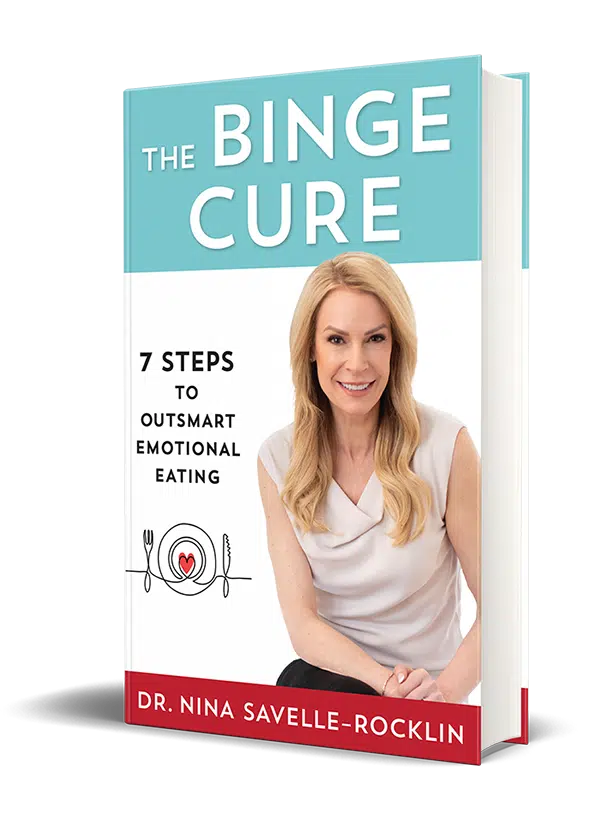
The Author
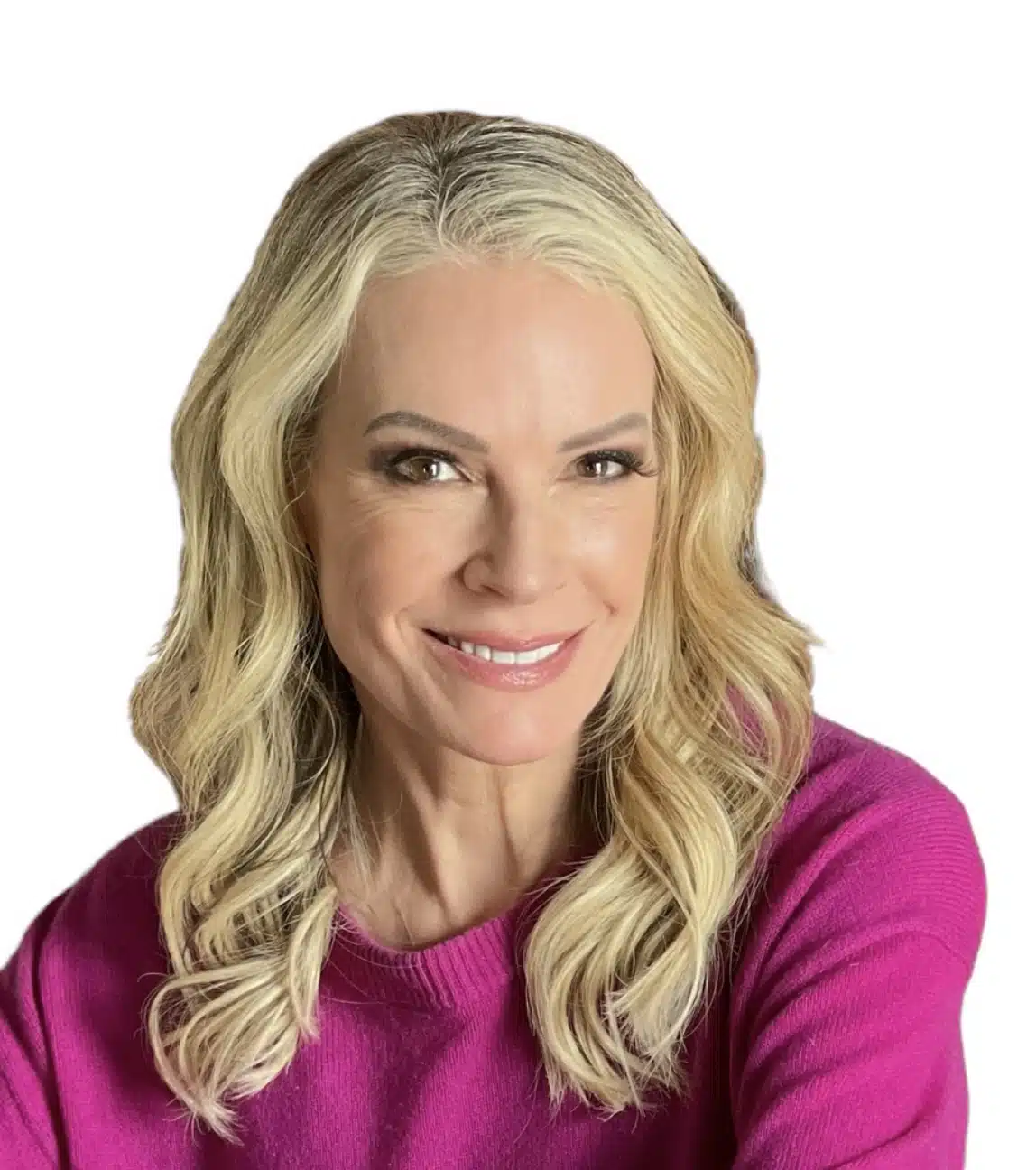
Dr. Nina Savelle-Rocklin is a renowned author and podcast host and one of the nation’s leading psychoanalysts known for the psychology of eating. Her signature message of, “It’s not what you’re eating, it’s what’s eating ‘at’ you” has resonated with hundreds of thousands of listeners from around the globe in 40 countries. As founder of The Binge Cure Method, she guides emotional eaters to create lasting food freedom so they can take back control of their lives and feel good in their bodies.
Related Blogs







